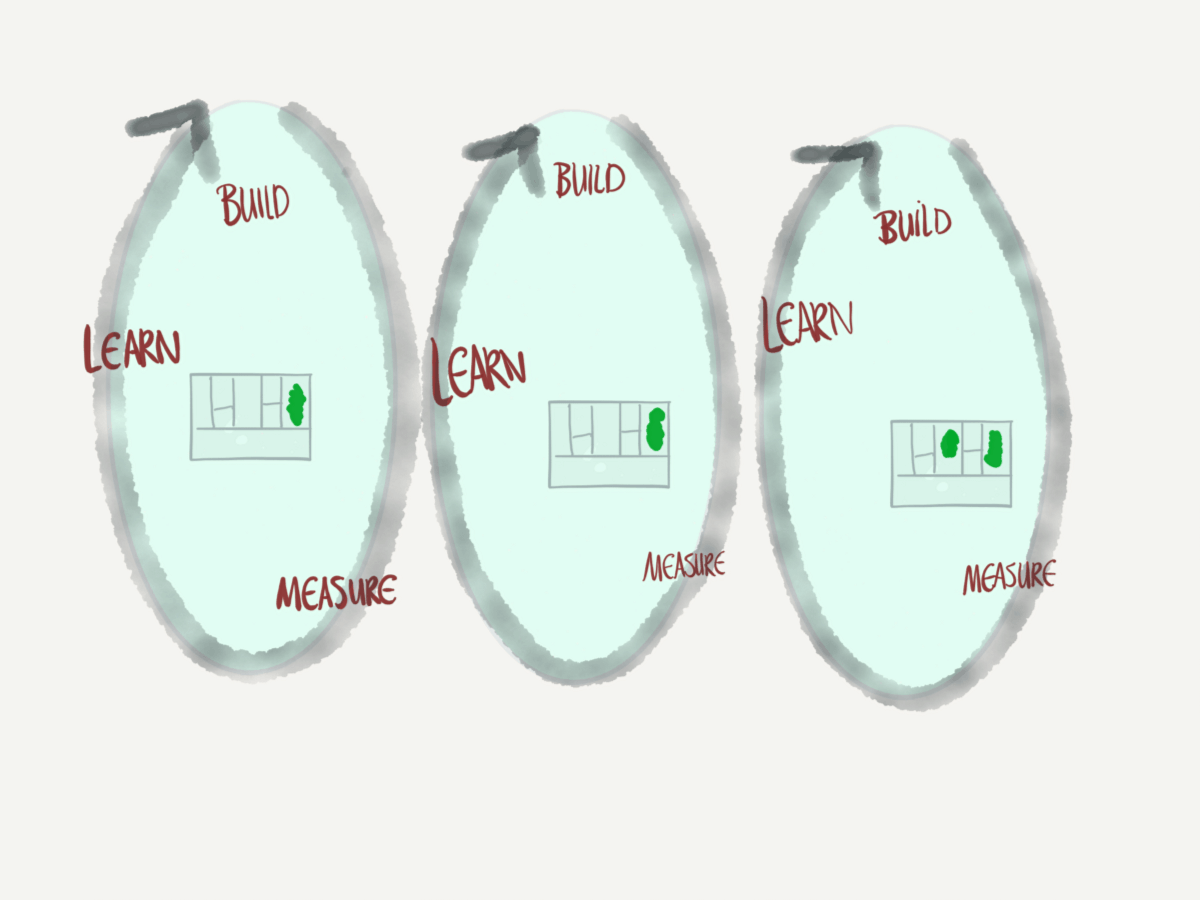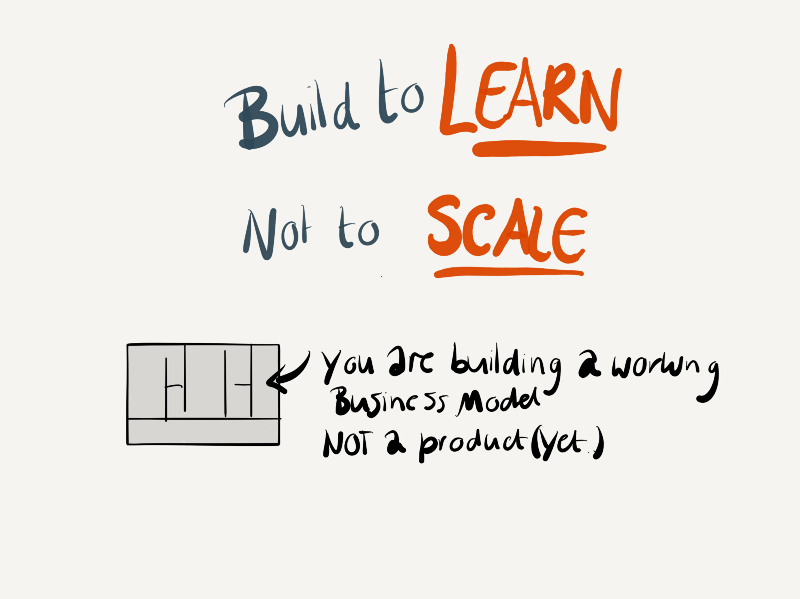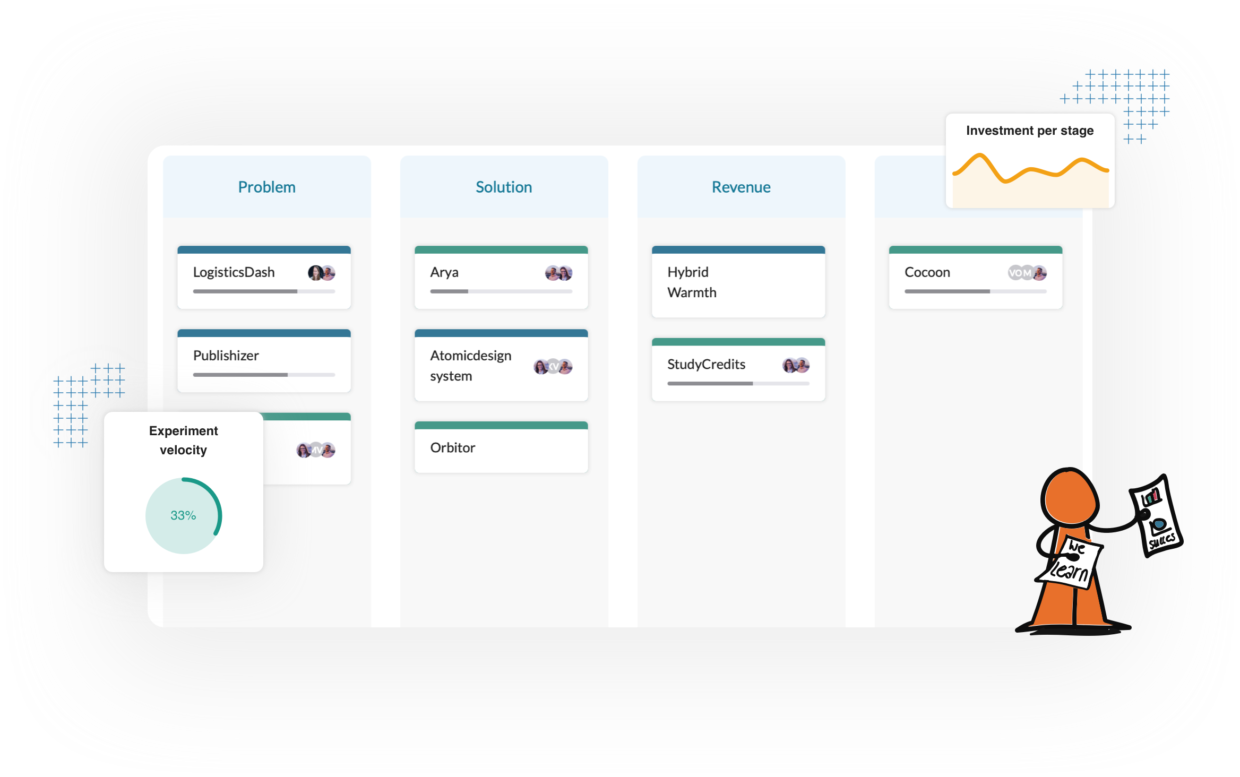Continuous experimenting in innovation

In the last post, I talked about the importance of validated learning. Trying to validate your way to a working business model. You don’t validate your business model by running one single experiment. Continuously testing risky assumptions is important in every phase of your startup, this process is called Lean Innovation. Helping you to de-risk the path to a successful business model.
It sounds easy enough but it is much harder than you think. Your first and foremost urge is to build something really awesome. Show the world your shiny new vision as a brand new product, world domination, and everything. Running experiments is something that feels counterintuitive, taking away hours of your precious time and your product. Even when you know it is valuable, even when you realize that learning before building can save much needed time and money and can lead you to more awesome products, it still feels this way. In a way, it feels like homework.
You are not building a product (yet) you are building a viable business model.
Experiment design
With each new experiment, it is important to remember that you are not testing your product, but rather your business model.
Every single experiment is build to learn, not to scale.
Ask why. Ask yourself what it is you want to validate. Identify your riskiest assumption and think of how to test this, in the most simple and cost
The basic structure for designing experiments looks something like this;
- Set a structure and timebox every experiment (1 or
2 week loops for instance) - Decide on what it is you want to learn (this loop) and make this falsifiable. (true/untrue)
- Agree on a number that determines success for this experiment and
write it down beforehand. - Design an experiment that will only test what you want to learn.
- Build and Run the experiment
- Analyze the data.
- Update your business model options with the learnings.
- Repeat!
It is important to have a structure of continuous experimenting to show learning progress towards a successful business model. By the time you are ready to scale, you already will have a proven customer base, and a way to grow it into something really big.
The MVP as a single proof of concept?
How does the MVP fit into this? Eric Ries talks about the MVP (or Minimum Viable Product) in his book. His definition:
“A Minimum Viable Product is that version of a new product which allows a team to collect the maximum amount of validated learning about customers with the least effort.”
Eric Ries
The term has since been used, and also heavily misused, for a lot of different things. Most of the time people wrongly refer to their first release of the product as their MVP.
An MVP is not your single proof of concept that will validate your business. Rather, an MVP is an experiment that will help you validate if the solution offer you have in mind, is something that has enough value for your customer segment. I’d rather avoid the term MVP.
In a

The experiments that you run when you are still validating the problem, and finding customer segments to test with will be different from the ones that you design later on.
In the early phases, explorative experiments like customer interviews are important. In fact, talking to your customers will remain important throughout the development of your business model. Other useful experiments, later on, are smoke tests and concierge models. I will explain these experiments in future posts.
Just remember that with every experiment you design, you want to learn something. Think of the easiest way to prove your hypothesis. Don’t worry about scaling. Think simple, if you have to buy customers to test, buy customers. If you have to mail people by hand to mimic some algorithm, do it!
You are building to learn, not to scale.

Esther Gons is the award-winning author of The Corporate Startup & Innovation Accounting. Winner of the 2022 Golden Axiom Business Book Award, 2019 Golden Axiom Business Book Award, and the 2018 Management Book Of The Year Award. She is an expert in Innovation Accounting, Innovation Strategy and Portfolio Management.
